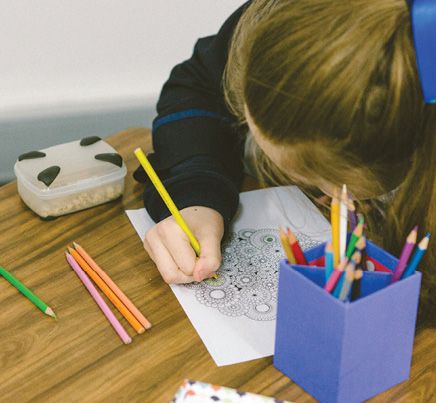
In recent years, mindfulness meditation has found its way from international workplaces into schools. IE Journalist Alex Leggett investigates how mindfulness is being perceived by teachers and how the outcomes are improving mental health and wellbeing for students.
The growing trend of teachers adapting their teaching strategies to include mindfulness comes after results show students are improving because of it. The practice of mindfulness meditation teaches students to be aware and focused on the ‘now’, teaching the mind not to wander, a concept that originated in Buddhism. Mindfulness is the secularised form of this meditation and has been incorporated into workplaces around the world including government organisations, hospitals, universities and schools.
History and evidence
In terms of the classroom, mindfulness has been on the rise in Australia, following its introduction to schools in the UK, Europe and US. It’s been implemented in Oxford, Harvard and now in Melbourne universities like Monash. A study from Oxford even found mindfulness meditation exercises can reduce relapses into depression by 44% with some researchers saying it is as effective as taking antidepressants.
Monash has overwhelmingly embraced the concept with its implementation stretching back to its medical students in 1989. Now they have expanded the model into a wide range of faculties including Business, IT, Engineering, Law, Psychology and Sport.
Mindfulness and technology
Clinical psychologist Richard Chambers and Monash colleague Craig Hassed, specialise in mindfulness-based therapies and have written a book called Mindful Learning. Their goal is to embed mindfulness into the Australian curriculum by 2020 to build emotional resilience where it matters most – during a child’s schooling.
“It’s becoming more and more obvious that children’s most important life skill is to develop attention, and if they can’t keep focused then there’s no learning. It’s crucial for people to learn to communicate and empathise with each other from an early age,” Dr Hassed said.
“Mindfulness affects memory, brain development and physical health and a lot of research has been done to show that it can influence and improve DNA repair, which slows down the rate of ageing.”
Dr Hassed said there are many fields of research on social and emotional training and there is a myriad of reasons why it is also good for students’ physical health.
“One of the main reasons it is so important right now is the overuse of technology and excessive screen time that impairs students’ ability to engage. So this is a type of antidote in some respects.”
Mindfulness as a practice can be divided into two aspects – the meditation sessions where a young student may meditate for around 10 minutes and the informal practice, that is, students’ ability to be mindful as they go about their day-to-day life.
“During the past 10 years, we’ve been running programs in schools and one of the first was with the Methodist Ladies’ College in Melbourne. We ran a program for Year 12s and had 20 students who went through it.
“We measured their wellbeing and found those who underwent mindfulness training had their mental and emotional health improve in contrast to the rest of the Year 12 cohort,” he said.
In terms of scepticism over the practice, Dr Hassed said if there are initial doubts about the program, he refers people to the evidence to show it works.
“I talk a lot about the science behind it in a simple, practical way. Generally their arguments are not based on anything substantial – it’s about looking at the bigger issue of how to engage attention.”
Monash has been involved in the development of an app called Smiling Mind, described as modern meditation for young people in an increasingly fast-paced world.
“I am an ambassador for the app and my colleague Richard was very active in its development,” Dr Hassed said.
“Smiling Mind is a free smartphone and web app developed by a team of psychologists with expertise in youth and adolescent therapy.”
The app’s website describes it as a simple tool that gives a sense of calm, clarity and contentment.
“Children today need it now more than any other generation,” Dr Hassed said.
“A lot of schools use the app as a supplement to their mindfulness programs in order to engage students and help combat stress.”
Dr Chambers believes it is important to make mindfulness more accessible to young people in a digital age where they are constantly being distracted.
“That’s what we have done with Smiling Mind – we adapted some of the more complex language for school age kids, but adults can still use it.”
Mindfulness in the future
The World Health Organisation (WHO) has predicted mental health issues are likely to be one of the biggest burdens to the health care system by 2030. So, is there a way to tie mindfulness in to pre existing bodies combatting depression such as MindMatters and Beyond Blue?
Dr Chambers hopes the government can look at funding a mindfulness program to ensure wellbeing is a priority in curriculum.
“It’s more than just wellbeing. Mindfulness also enhances academic and work performance, and has other benefits like developing communication and better relationships.
“This combination – less stress, better performance – is why it belongs in education.”
References and additional information
http://mindfulnessinschools.org/
www.monash.edu/counselling/mindfulness.html
http://www.oxfordmindfulness.org/wp-content/uploads/jccp-paper-021213.pdf


































































































































